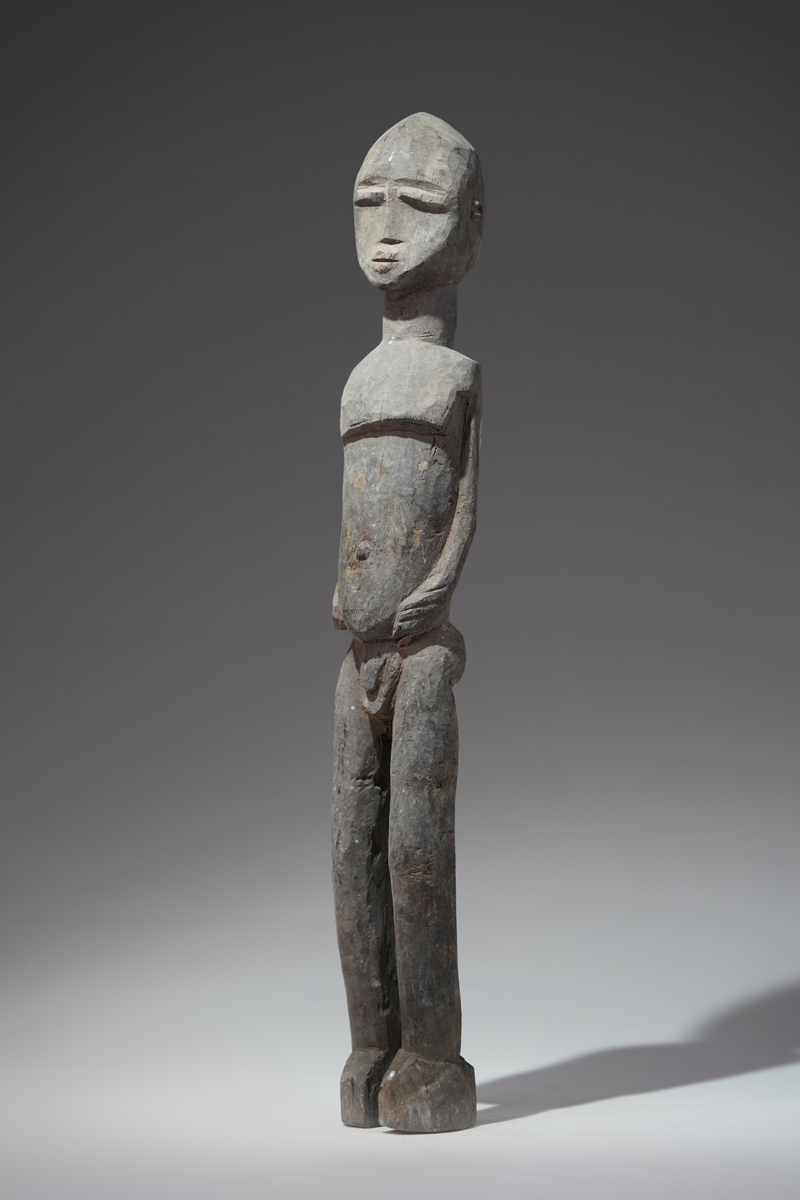 |
A male Lobi sculpture, Ivory Coast.
Lobi sculptures are wooden figures created by the Lobi people, an ethnic group primarily found in Burkina Faso, Ghana, and Côte d'Ivoire in West Africa. These sculptures, often referred to as bateba, hold significant spiritual and cultural meaning within Lobi society. They play a crucial role in the Lobi people's religious and social practices, and their purpose is deeply tied to their belief system.
Purpose and Meaning of Lobi Sculptures
1. Representation of Spiritual Beings (Bateba)
Lobi sculptures are believed to embody spiritual beings known as bateba. These beings act as intermediaries between humans and the supreme deity, Thangba Yu, as well as other spirits, such as ancestors or bush spirits. The bateba are created to address specific needs or challenges faced by individuals or the community.
2. Protection and Guardianship
The primary role of Lobi sculptures is protection. They are placed on household or communal shrines, known as thildu, dedicated to spirits called thil. These figures are thought to ward off evil spirits, malevolent forces, illness, and misfortune. Each bateba is assigned a specific protective function, such as safeguarding the family or ensuring the fertility of crops.
3. Healing and Problem-Solving
Lobi sculptures are also used in rituals to address problems such as illness, disputes, or social disharmony. A diviner or spiritual leader might recommend the commissioning of a particular bateba to help resolve issues or appease the spirits.
4. Moral and Social Guidance
Bateba figures are seen as moral guides, encouraging proper behavior and discouraging wrongdoing within the community. They serve as reminders of the spiritual consequences of ethical and unethical actions, reinforcing societal values.
5. Aesthetic and Spiritual Significance
Lobi sculptures are characterized by their stark and abstract forms, with minimalistic and often exaggerated features. The simplicity of these figures emphasizes their spiritual rather than physical nature. The size and shape of a sculpture often reflect its intended purpose, with some figures appearing passive and serene, while others display dynamic and aggressive postures.
7. Connection to the Natural World
The Lobi people see their sculptures as part of the interconnectedness between humans, spirits, and nature. These figures not only mediate between the physical and spiritual realms but also underscore the Lobi belief in the interdependence of all living things.
sold
Height: 58 cm
Weight: 2 kg |
 photo: wolfgang-jaenicke.com, for more information, please write us an e-mail with the identification number of the photo identification no. XBD179551.jpg
photo: wolfgang-jaenicke.com, for more information, please write us an e-mail with the identification number of the photo identification no. XBD179551.jpg |
|
